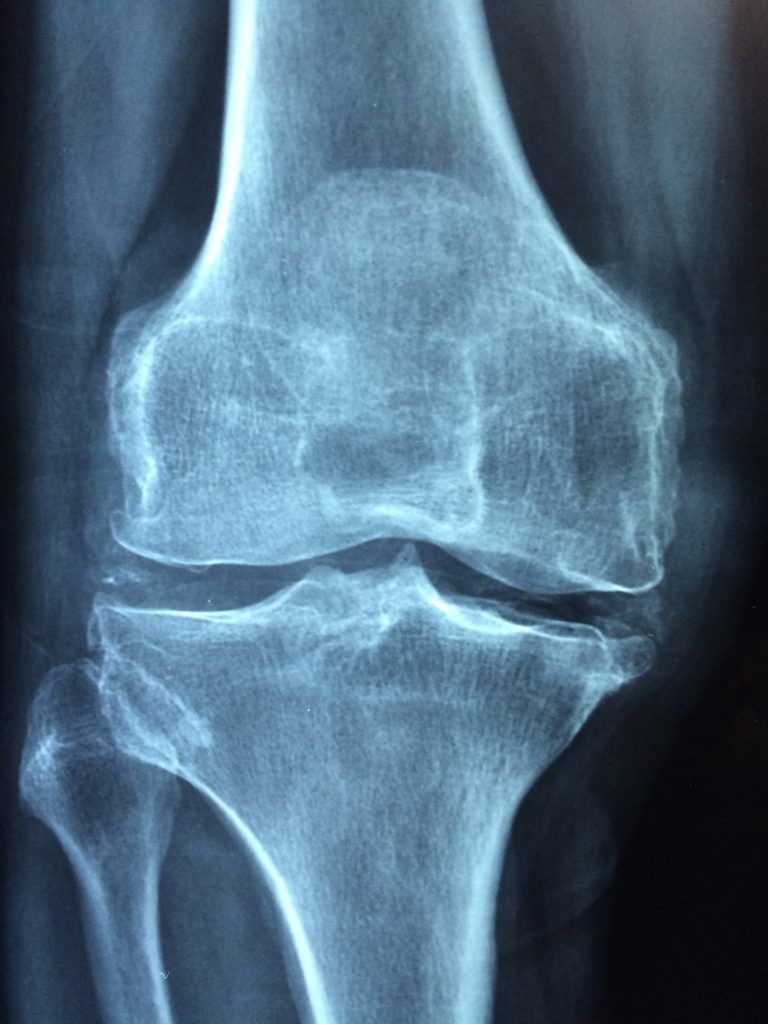What is OA?
OsteoArthritis (“osteo” = bone/joint, “-itis” = inflammation) is a degenerative condition whereby there is a break down of the normal lining of cartilage within a joint. This can be associated with pain, swelling and problems moving the joint, but interestingly these symptoms are not always present.
How is OA diagnosed?
OA is usually diagnosed based on an examination of your joint (swelling, range of motion etc..) and with an X-ray. Blood tests may also be used to exclude other forms of arthritis. Again, signs of “degenerative change” on an X-ray (eg. Loss of cartilage, bony spurs) are not always associated with pain or dysfunction.

What treatments are available?
Treatments will depend on each individual’s symptoms and expectations (eg. being able to walk/run/play sport, sleep), but may include:
- A weight loss program
- A tailored exercise program, such as the research-proven GLA:D program offered by our physiotherapist, Andrew Edwards.
- Pain management with medication
- Offloading devices such as braces, walking sticks and shoe insoles
- Joint replacement surgery (eg. Total Knee Replacement)
Osteoarthritis is a big problem in Australia. The stats show that anywhere between 2.3 and 3.9 million Australians suffer from it. And it’s likely that number will increase by up to 50% in the next decade. Not only is osteoarthritis prevalent, but it’s also very costly, with the Australian economy being hit almost 2 billion dollars every year. It’s a big problem that’s projected to get worse.
Here’s some other facts that you may not know about osteoarthritis:
- It is diagnosed in 50% of patients over the age of 65 visiting the GP
- In older people with chronic pain, 70% suffer with arthritis
- Two thirds of Australians with arthritis have a moderate or substantial work-related disability ie. work is largely impacted for people with arthritis
- Over 80,000 Australians aren’t able to work due to having arthritis
- Males who retire early due to arthritis will have an average of 81% less savings to fund their retirement than those who retire at 65
- Only a small percentage of people with arthritis meet the minimum standards for physical activity (as set by the World Health Organisation)
The knee and hip joints are by far the most common joints in the body affected by arthritis (with knee and hip joint replacement surgeries increasing by approximately 30% over the past decade). The common thinking about knee and hip arthritis has revolved around it being a “wear and tear” condition of the cartilage, which needs rest so that the joints don’t wear out further, but we’re now understanding that it’s more complicated than that, and that exercise / movement / activity are important because they provide healthy loads to these joints which are vital for the regeneration of soft tissue.
The GLA:D PrOGRAM
The GLA:D program is an exercise and education program for sufferers of knee and hip arthritis. It consists of 2 education sessions, which help you to understand what arthritis is, what causes it and what you can do about it, followed by 12 sessions (over 6 weeks) of supervised small group muscle strengthening and control exercise. The program was originally developed in Denmark, and was brought to Australia a couple of years ago. The results in Denmark have shown a 32% decrease in arthritis symptoms, as well as reduced time off work and need for pain medications.
The problem is that exercise traditionally hasn’t been promoted for the management of arthritis (with only 3.7% of sufferers being referred for any form of exercise therapy), even though numerous clinical guidelines strongly recommend exercise as a first line treatment, before referral to an orthopaedic surgeon. The research has shown that exercise can delay the need for a knee or hip replacement by up to 6 years.
If you have knee or hip arthritis symptoms which are affecting your quality of life, talk to us today. Our physiotherapist, Andrew is a certified GLA:D™ Australia physiotherapist. Online bookings can be made here: https://aheadphysiotherapy.com.au
You can read more about the GLA:D program here: https://gladaustralia.com.au
